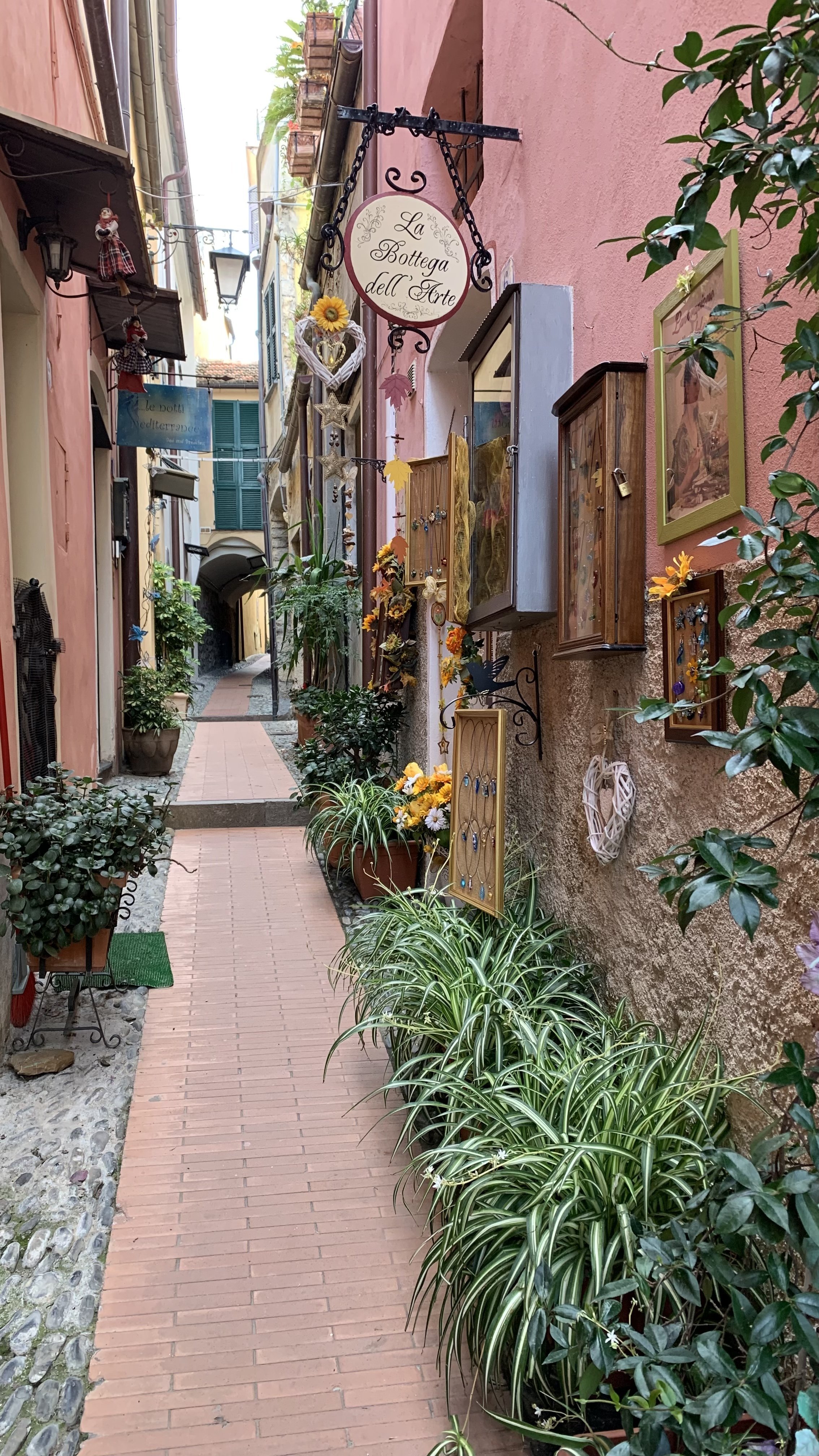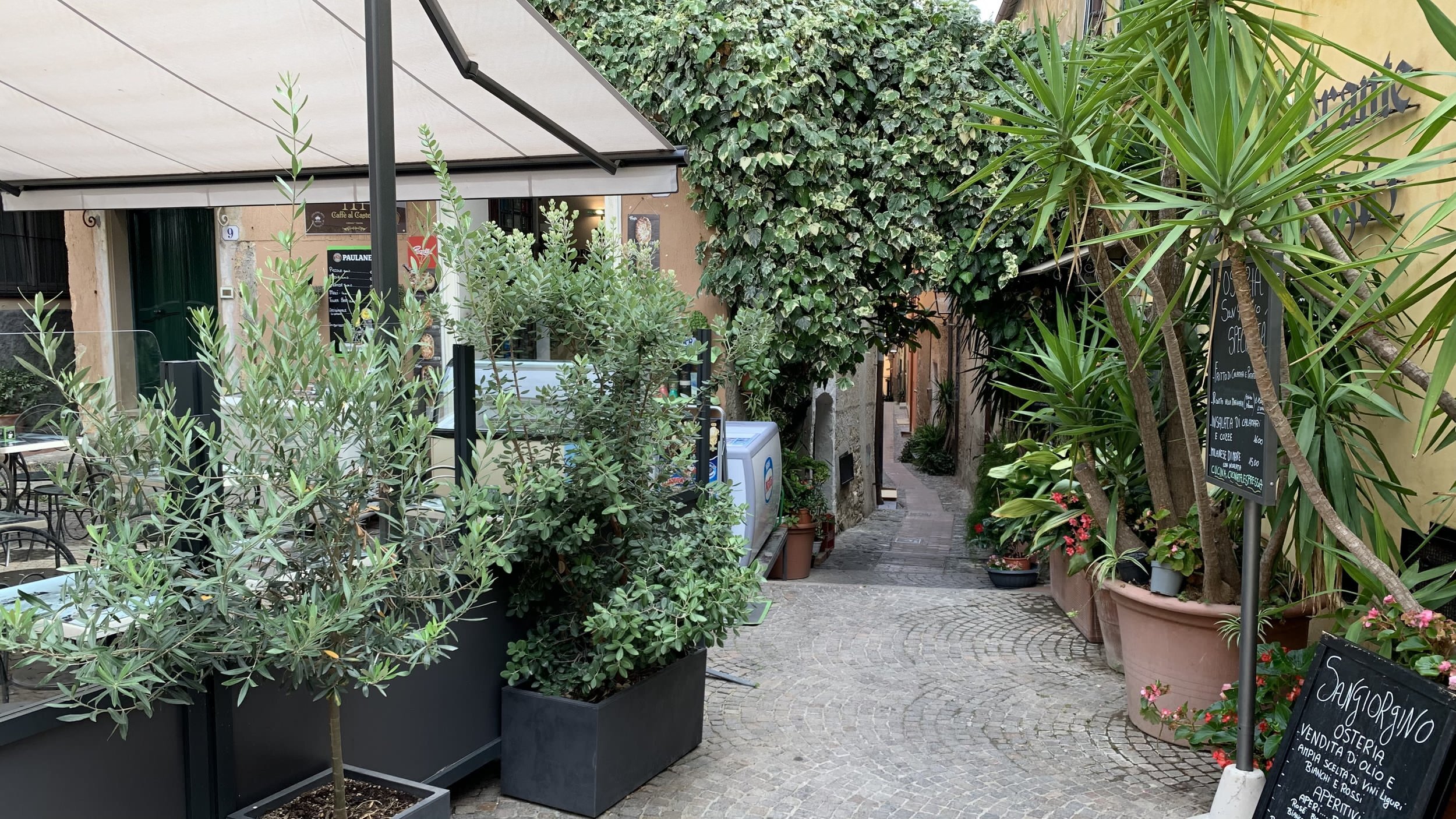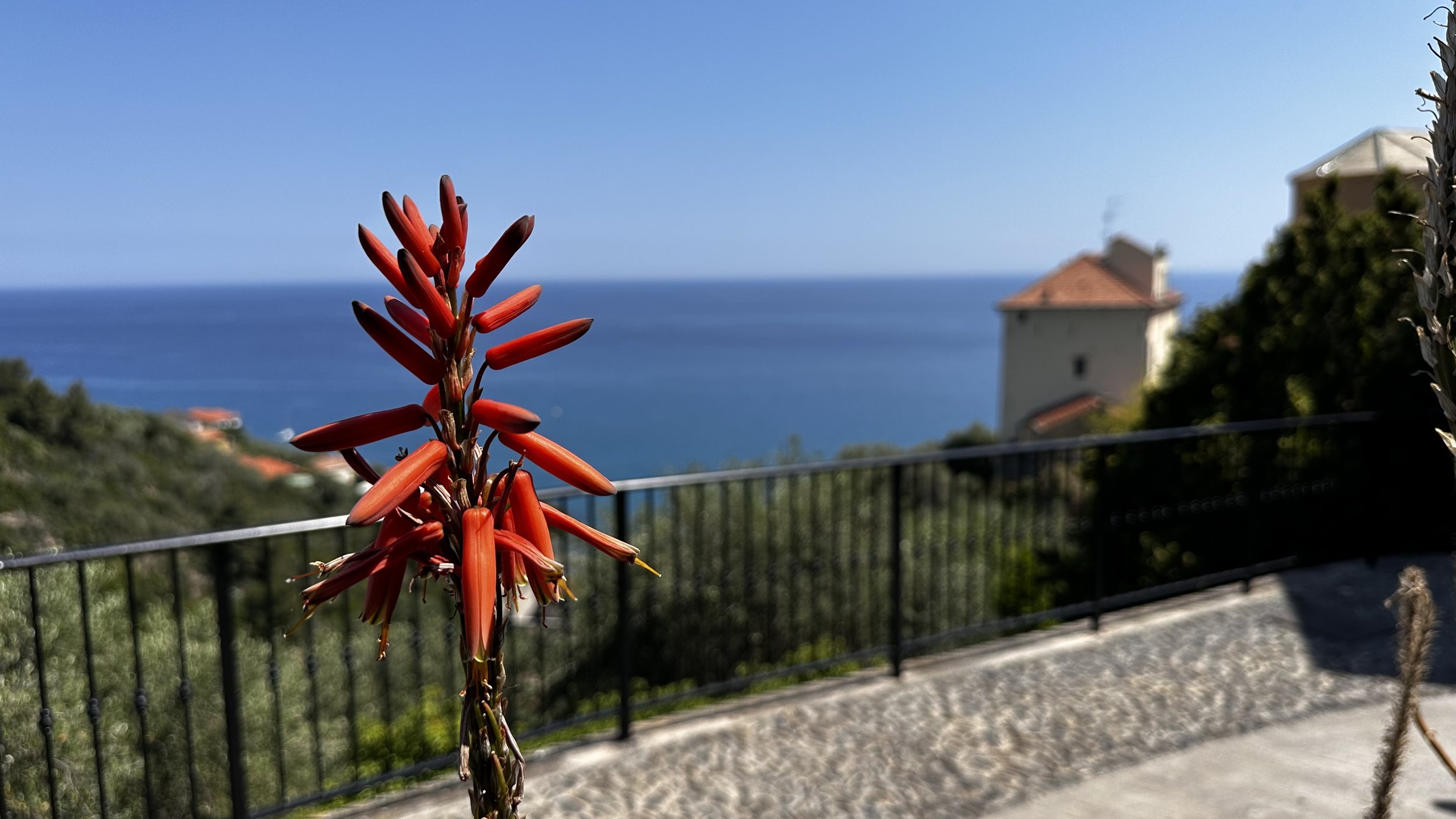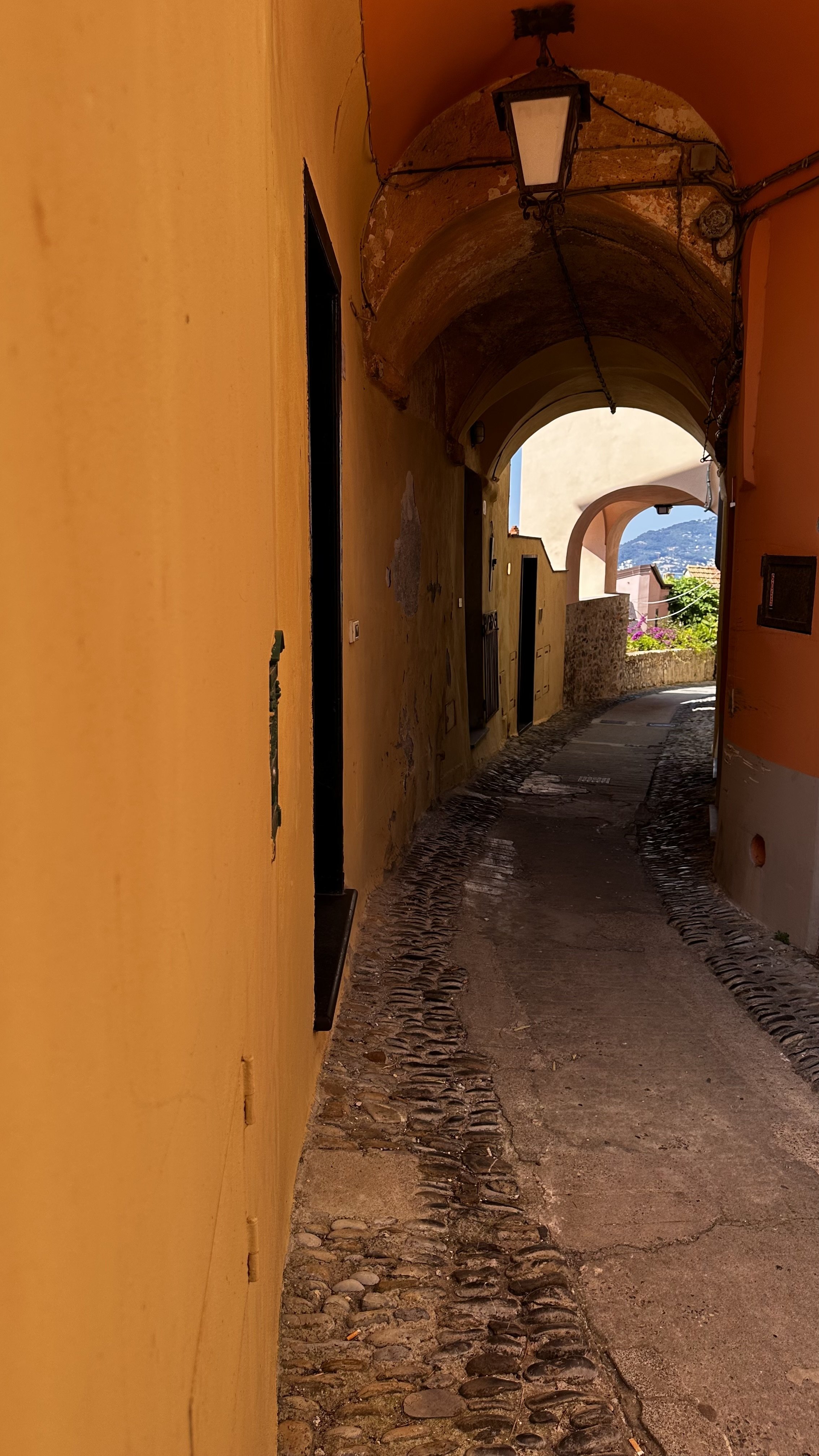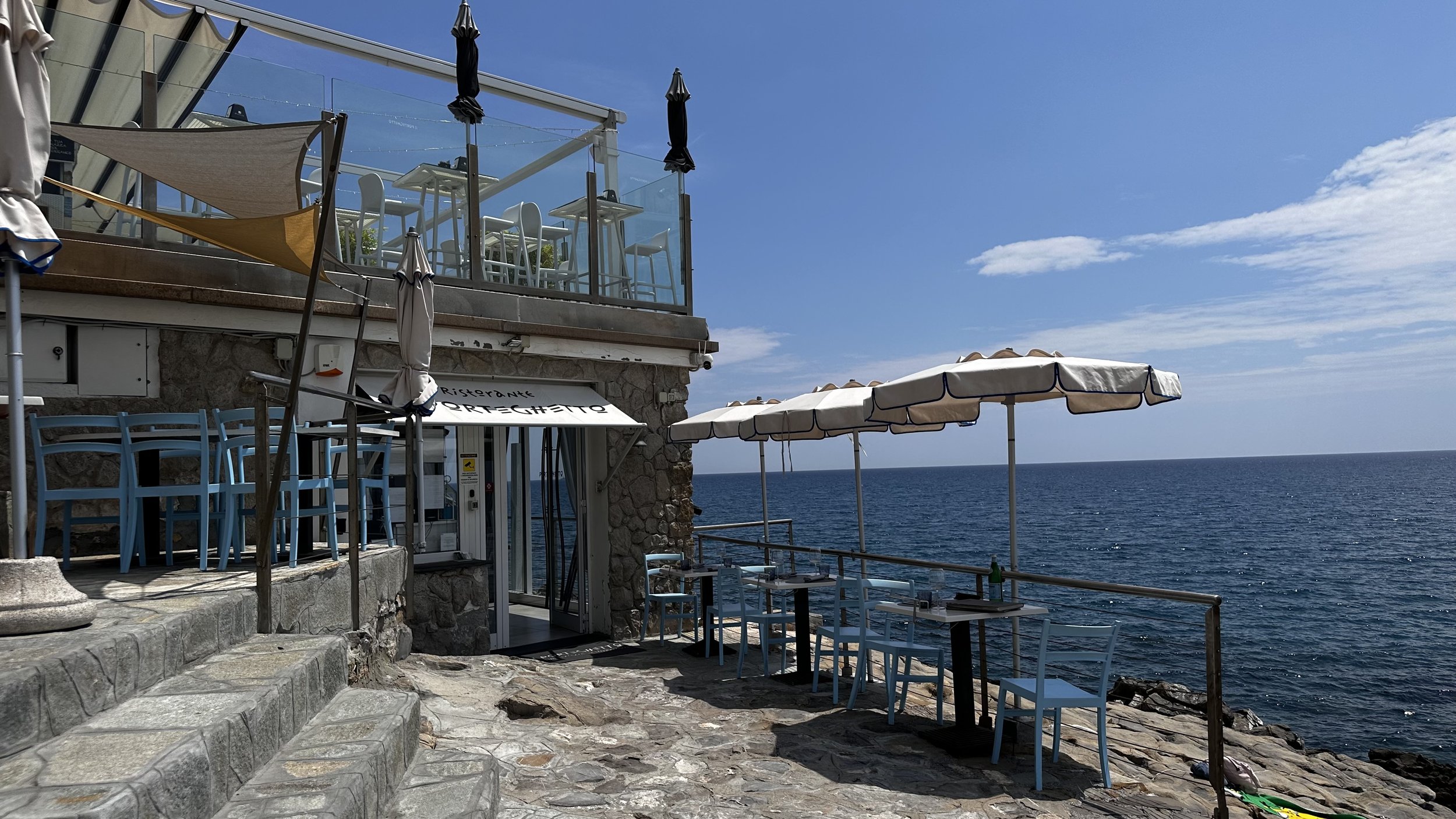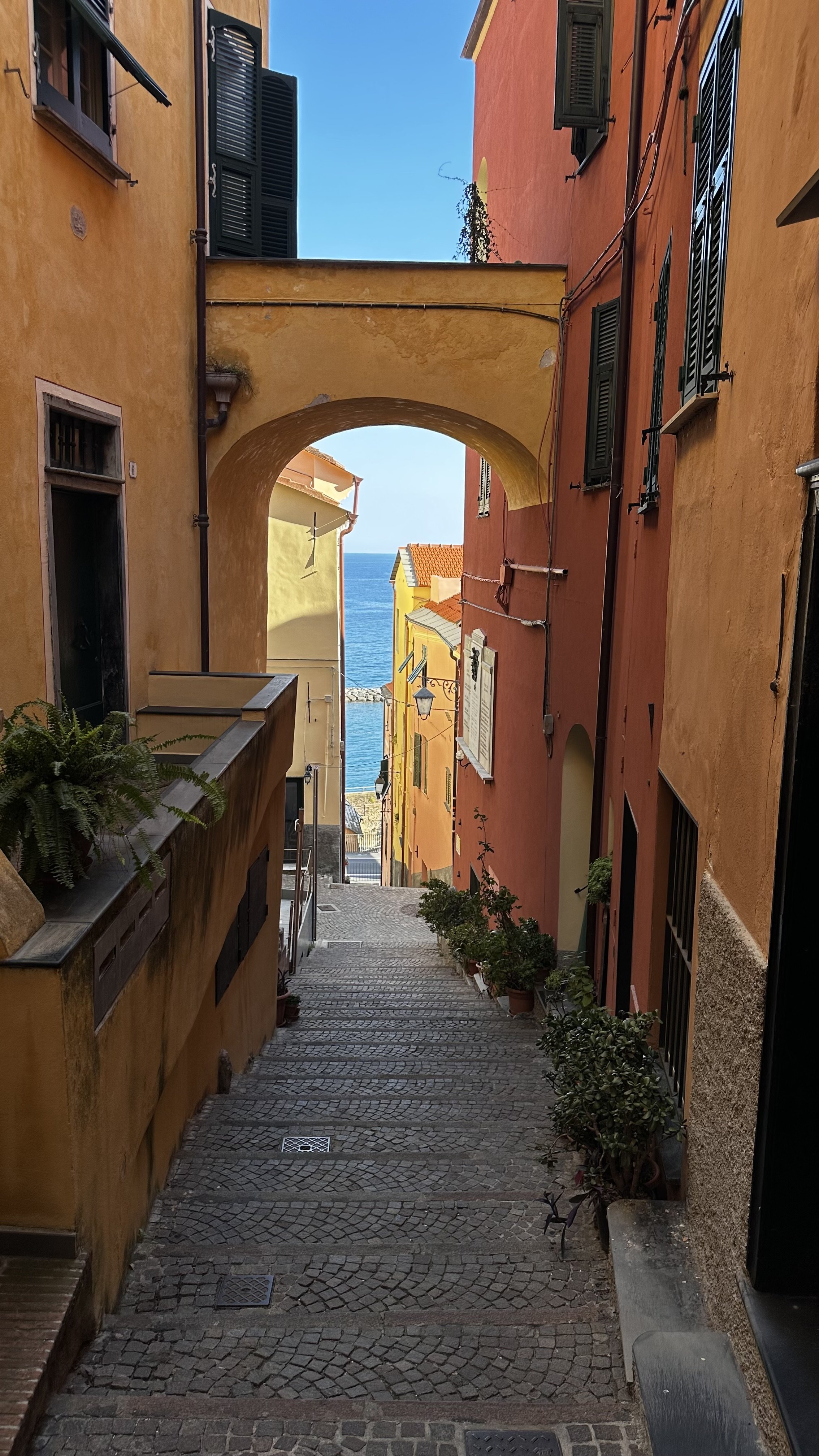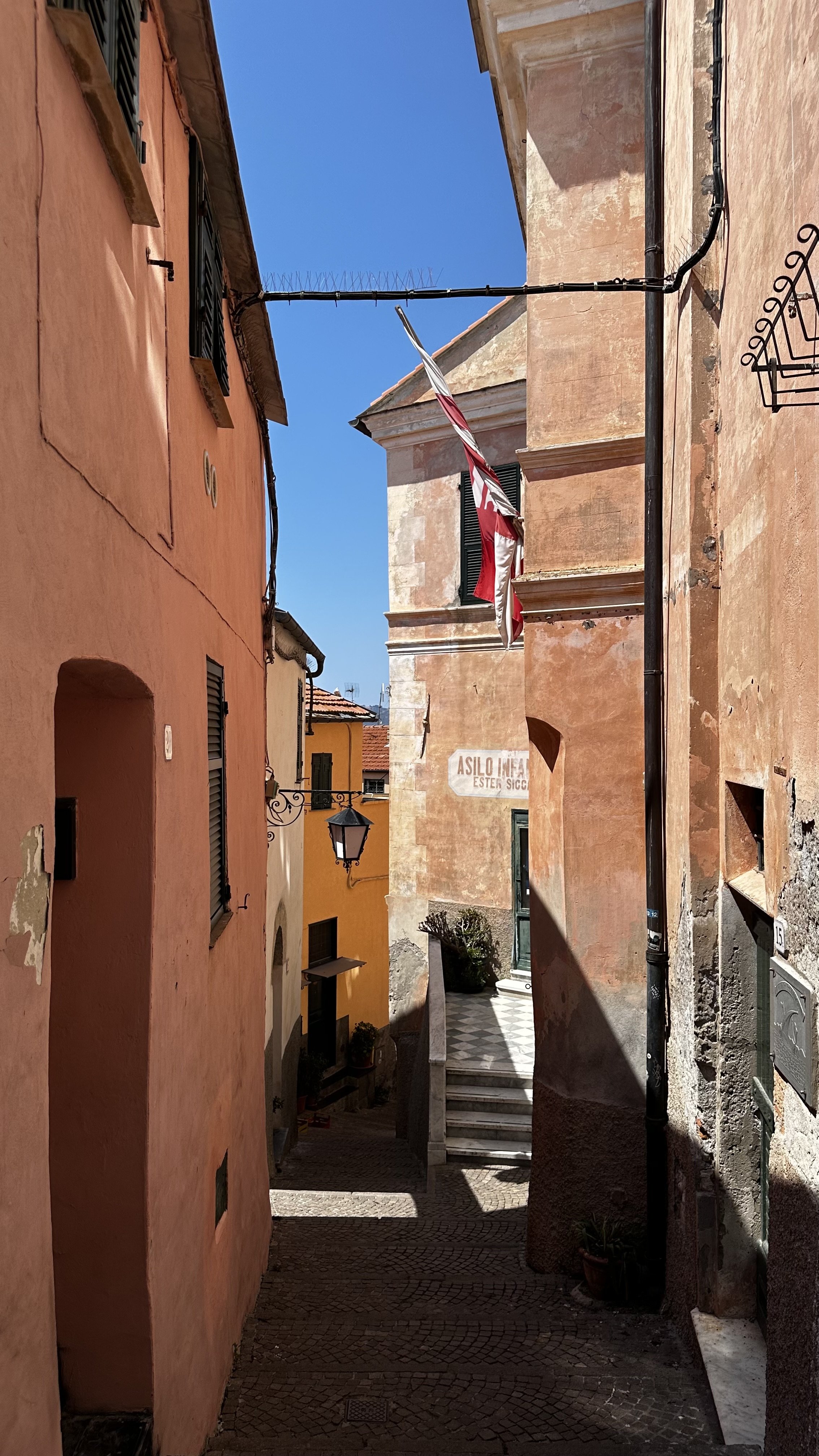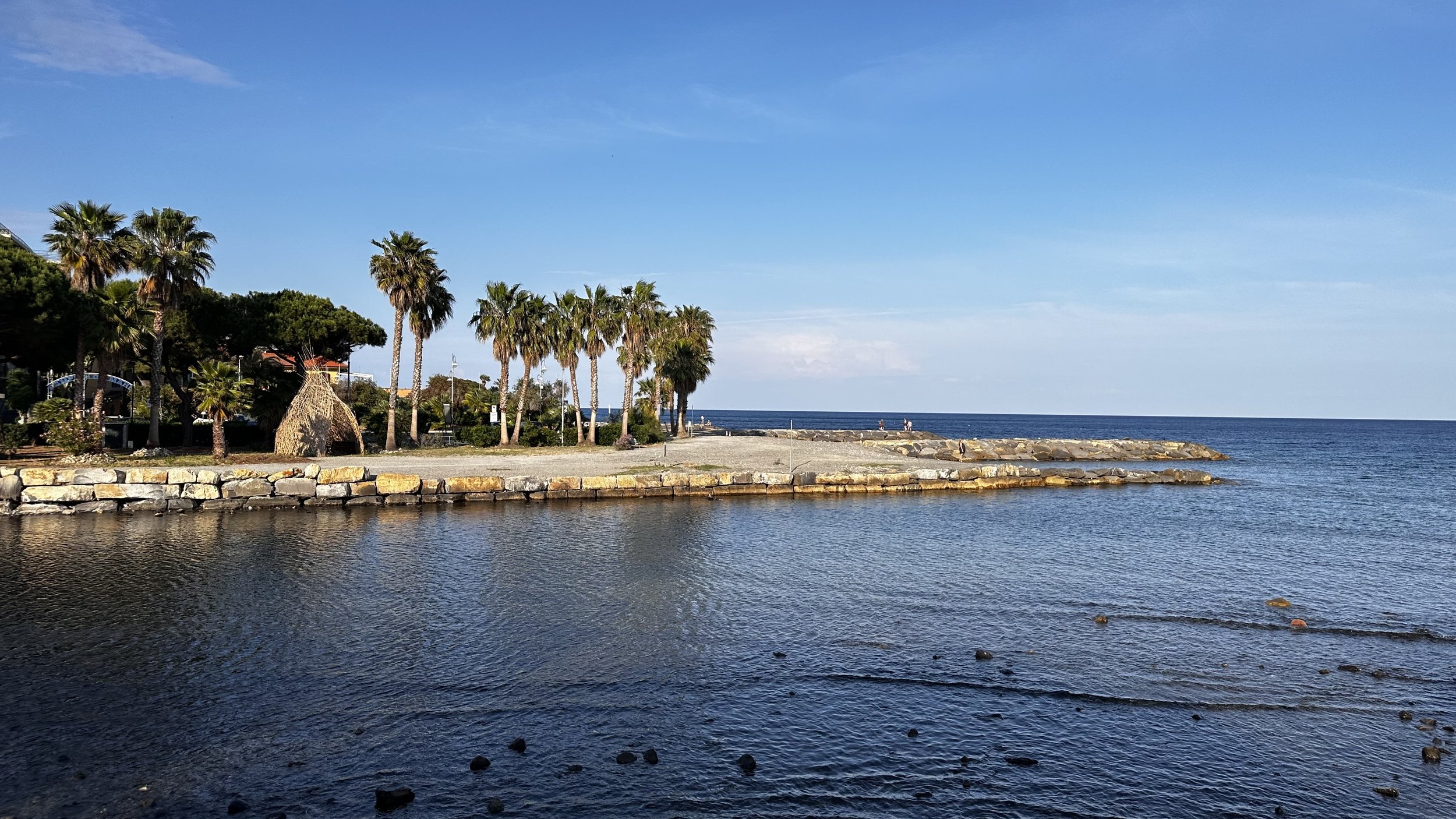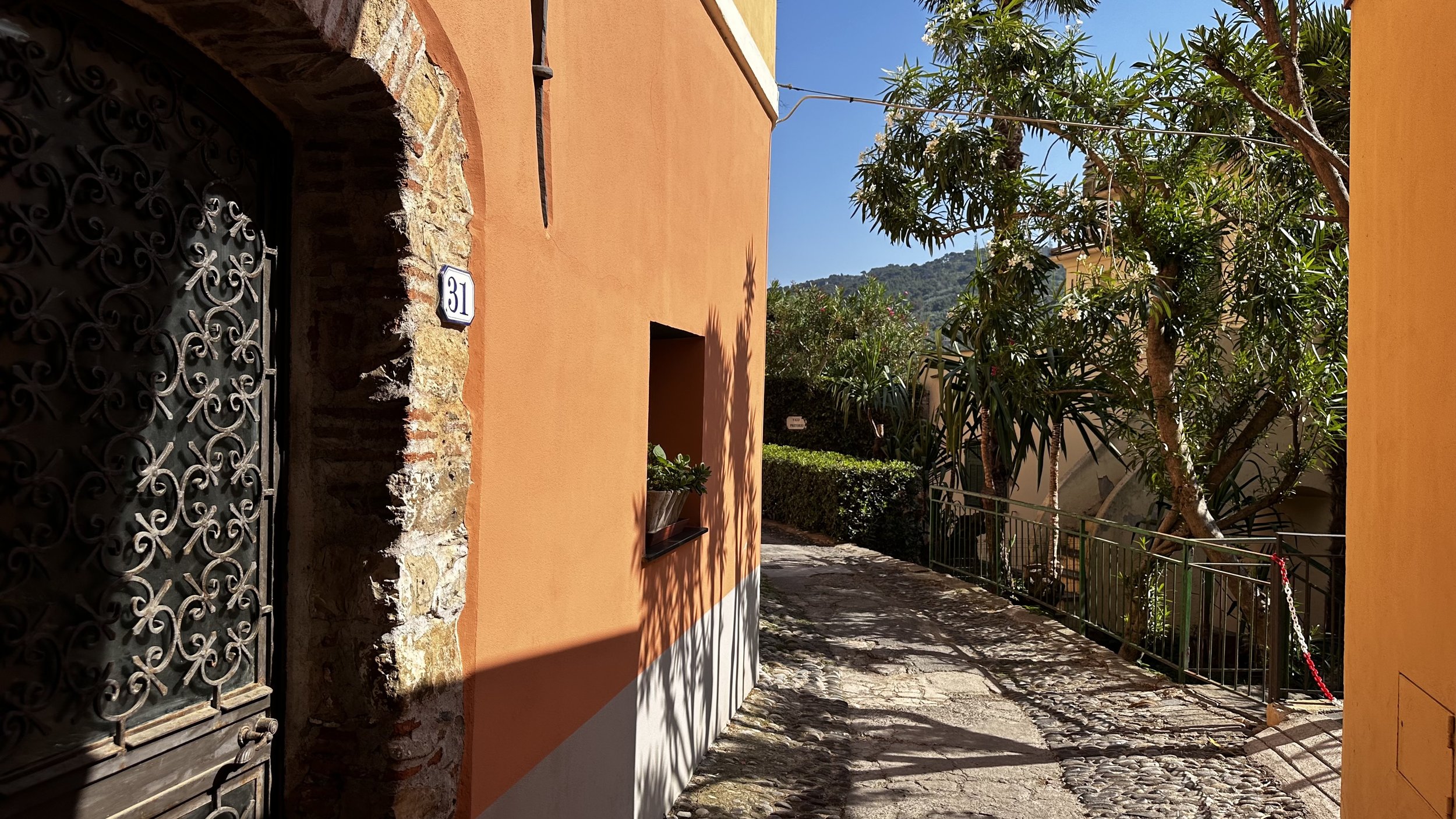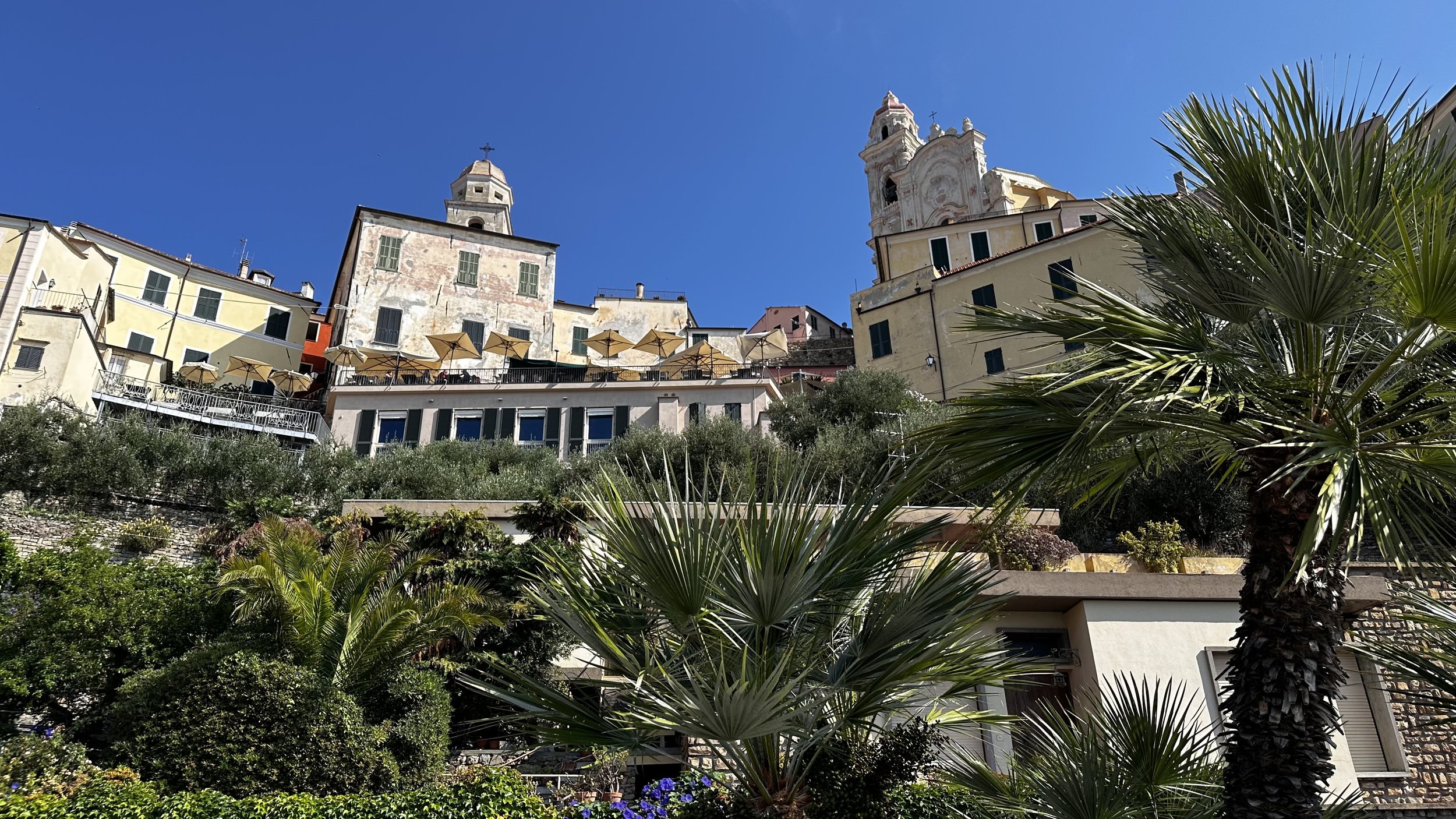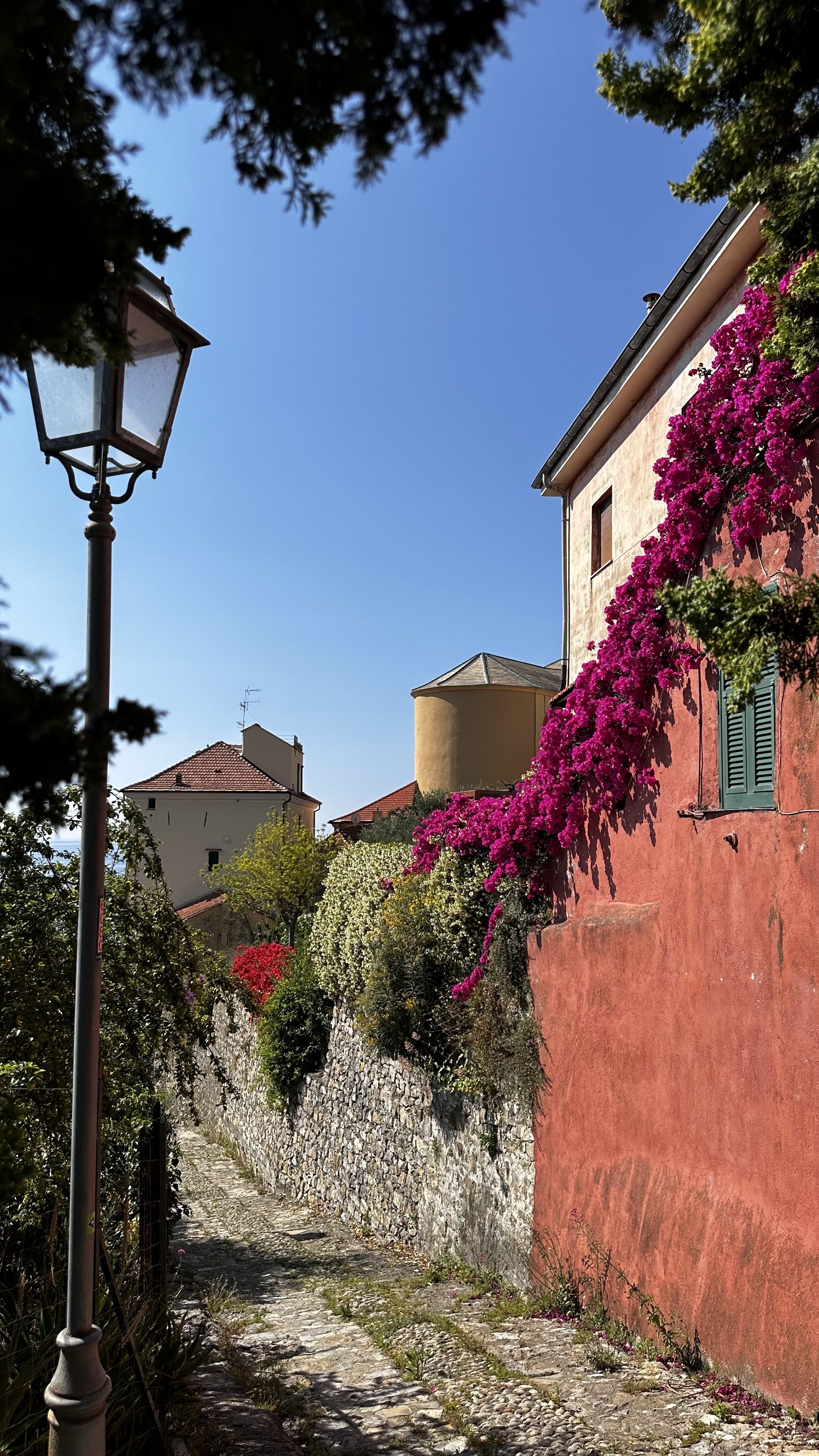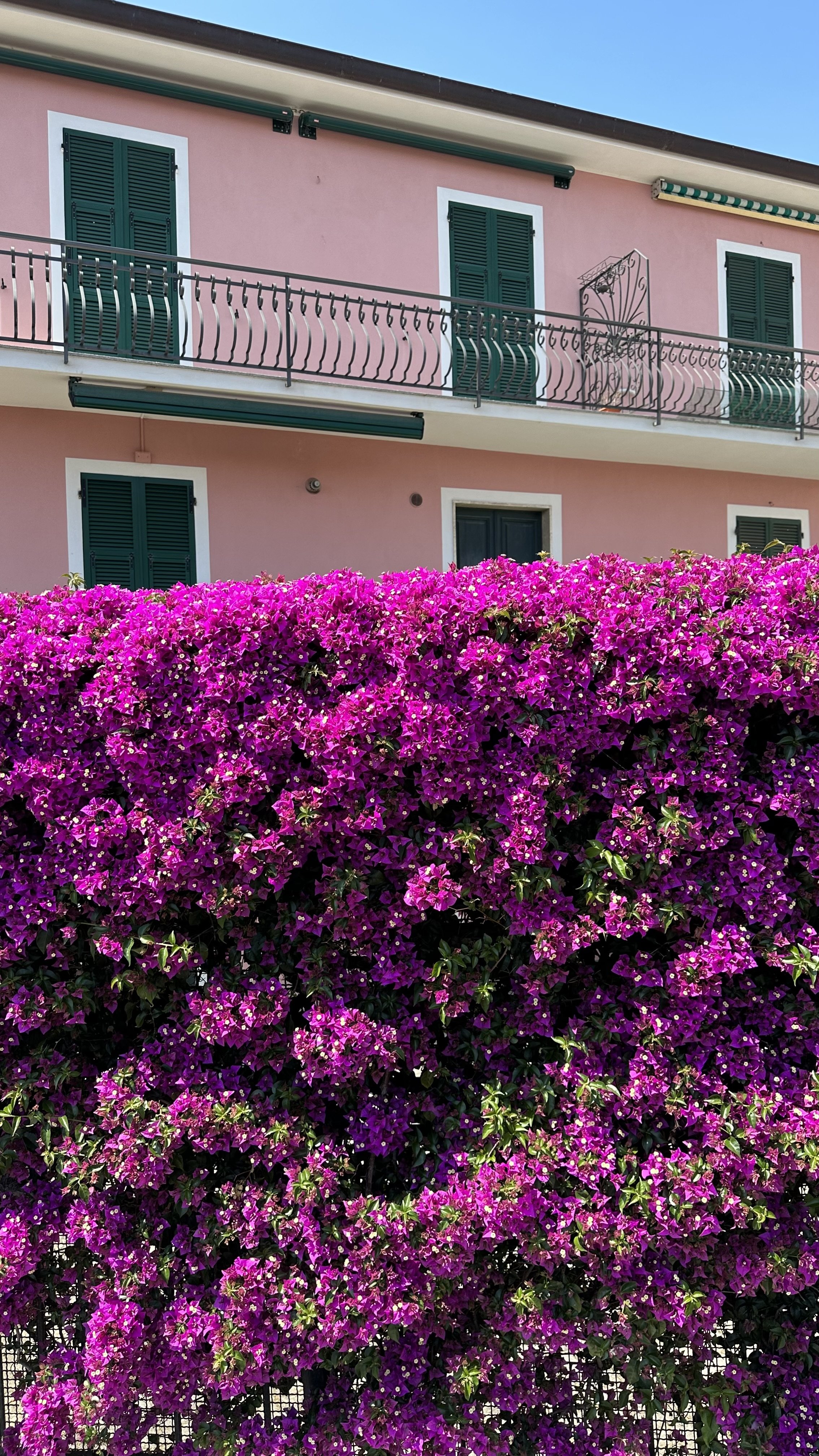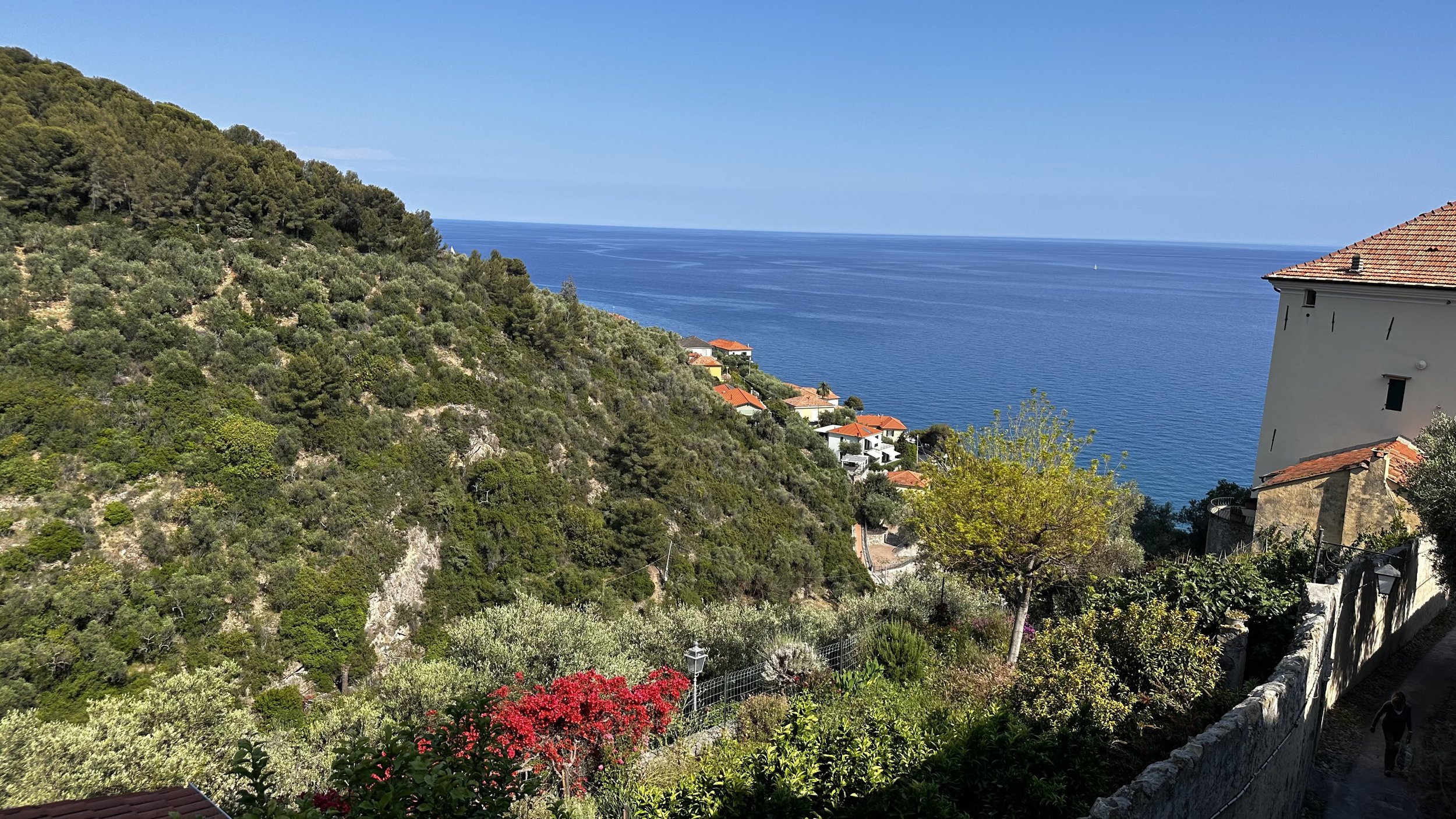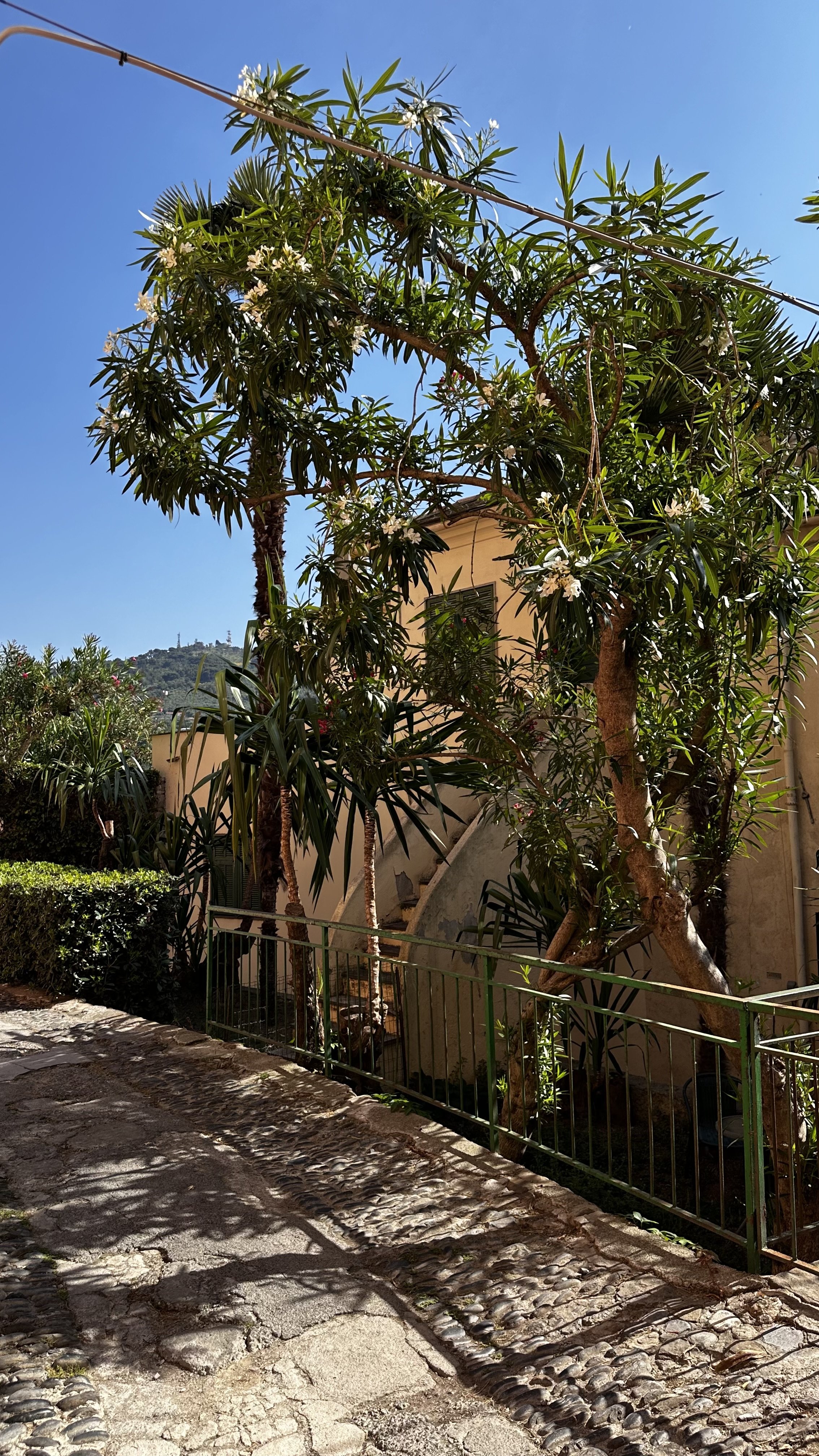Cervo, Liguria (Italy) Impressions
I have come here for over twenty years. For the fantastic campground where I can even park the camper beachside, the sunrises in the sea, the surrounding towns like Diano Marina, for the food and the pleasant people.
Time and again this little gem in the midst of the Ligurian Riviera fascinates me. It is built on the hillside with steep and narrow alleyways. Artists set up camp here, there are classic music festivals in the summertime and the Centro Storico di Cervo cathedral is a place like no other.
Obviously you can not miss Centro Storico di Cervo cathedral in Cervo. Be it from the street or the sea. It towers impressively above this cute old town.
On the inside Centro Storico di Cervo cathedral is any bit as impressive as from the outside.
It‘s quite a hike uphills through Cervo‘s alleyways. But I cannot get enough of it. There are plenty of bars and restaurants scattered across this town, in alternation with litte art stores and art galleries.
In some of the restaurants you sit in the middle of plants and palm trees that seem to grow out of the buildings.
People certainly live in paradise here in Cervo.
View from top of Cervo down towards the Mediterranean and the Ligurian Riviera.
Cervo, Liguria (Italy) from a distance
It's a ritual of arrival: camp at Camping Lino (on the left) and go up to the peer for this view of Cervo and the Centro Storico di Cervo (Cervo Historical Center).
About Cervo
Less than 10 km from the center of Imperia lies one of the most beautiful villages in Italy. We are talking about Cervo, or as it is often called, Cervo Ligure.
This seaside village has preserved its medieval characteristics throughout the ages and is now a real pearl of Liguria, appreciated both for its architectural beauty and for the unique landscape that surrounds it. In front of us we have the blue and infinity of the sea, while behind it dominates the green of the hills.
Cervo is tied to its history and origins. This is immediately apparent in its medieval architecture and structure.
Even its name has ancient origins. According to some historical sources, it seems that Cervo derives from the ancient Latin word "servant" (literally: to offer services). This word was commonly used in Roman times on signs and above the entrances of taverns to indicate hospitality.
It was not until the late 1500s, with the spread of the vernacular, that Servo was mispronounced as Cervo.
An early settlement seems to date back to prehistoric times. It was inhabited by the Liguri Ingauni, the ancient local population.
In 181 BC. Cervo was conquered by the Roman Empire until its fall in 476 AD.
At the beginning of the 13th century it proclaimed itself an independent municipality by accepting the protectorate of the Republic of Genoa, while in 1330 it became a fief of the Knights of Malta, but only for a short period.
Between the 16th and 17th centuries it was subject to numerous raids by the dreaded Saracen pirates. These landings, followed by violent and brutal raids, were a fairly common phenomenon throughout western Liguria. However, they were more concentrated in Cervo because the pirates were attracted by the coral trade. In fact, coral fishing in the seas of Sardinia and Corsica was the main activity of its inhabitants.
The historical center has remained unchanged for centuries and can be visited only on foot, walking along the narrow streets that rise from the sea to the promontory on which rises the majestic Church of St. John the Baptist, also called "dei Corallini" because it was built thanks to contributions from coral fishermen.
The church was built between the 17th and 18th centuries and was designed by the architect Giobatta Marvaldi. The style of the façade and the opulent interior, adorned with works and marbles, is baroque. It is a good place to start your tour of Cervo.
Leaving the church and turning right into via Grimaldi-Salineri, we reach piazza Santa Caterina, where we can admire the Castello di Clavesana, built in the 17th century by the marquises of the same name. The building incorporated the previous Romanesque tower, built to defend the village during the Byzantine period. Today the castle houses the Ethnographic Museum.
Music and Cervo have a deep connection that has lasted since 1964, the year the "International Chamber Music Festival", also nicknamed Cervo Festival, was founded.
The event, which attracts musicians and audiences from all over the world, was born thanks to Sandor Vegh, a Hungarian violinist who saw great potential in the characteristic concave façade of the Church of St. John. Thanks to this curious architectural peculiarity, the acoustics of the central Piazza Corallini are almost perfect.
In this magical setting, on summer evenings, it is possible to be transported by the notes of some of the world's most famous classical musicians: Pietro Citati, Henry Furst and his wife Orsola Nemi, Casorati, Campagnoli, Gina Lagorio, Maurizio Pollini, Alexis Weissenberg, Jörg Demus, Jeffrey Swann and Paul Badura-Skoda, to name but a few.
In addition to the Stag Festival, many other events mark and punctuate the summer days and evenings. Among them is the "Stag's Witch You": a multi-day cultural and literary event. The five finalists of the prestigious "Premio Strega" are the protagonists of this event.
The landscape surrounding Cervo has also influenced its food and wine tradition.
In fact, the most important products are the extra virgin olive oil, produced from the fruit of the olive trees that grow luxuriantly behind the medieval village, the fish that are caught daily in its waters, and the Vermentino, a white wine made from grapes that grow in the surrounding vineyards.
Cervo, together with the Imperiale villages of Apricale, Seborga, Lingueglietta and Triora, is part of the association "The Most Beautiful Villages of Italy" and in 2016 was nominated as Borgo dei Borghi by the Rai 3 TV program "Alle falde del Kilimangiaro".
How to reach Cervo in Liguria
The village of Cervo Ligure is located on the coast between San Bartolomeo al Mare and Andora; in fact, it is the last municipality of Imperia before entering the province of Savona.



